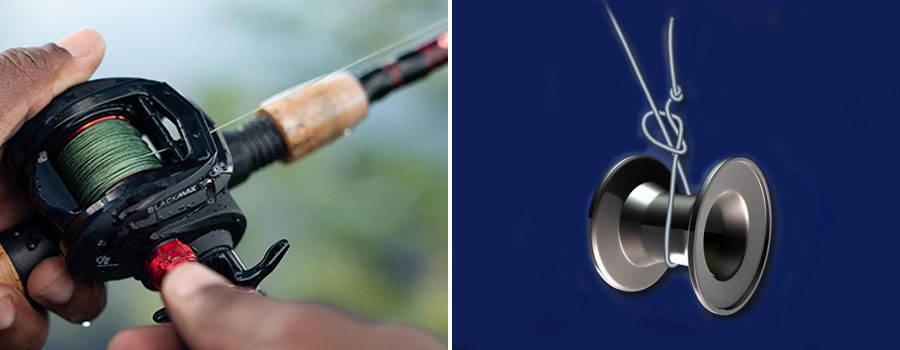
🎣 The Tale of the Perfect Cast: How A Well-Spooled Reel Spells Success
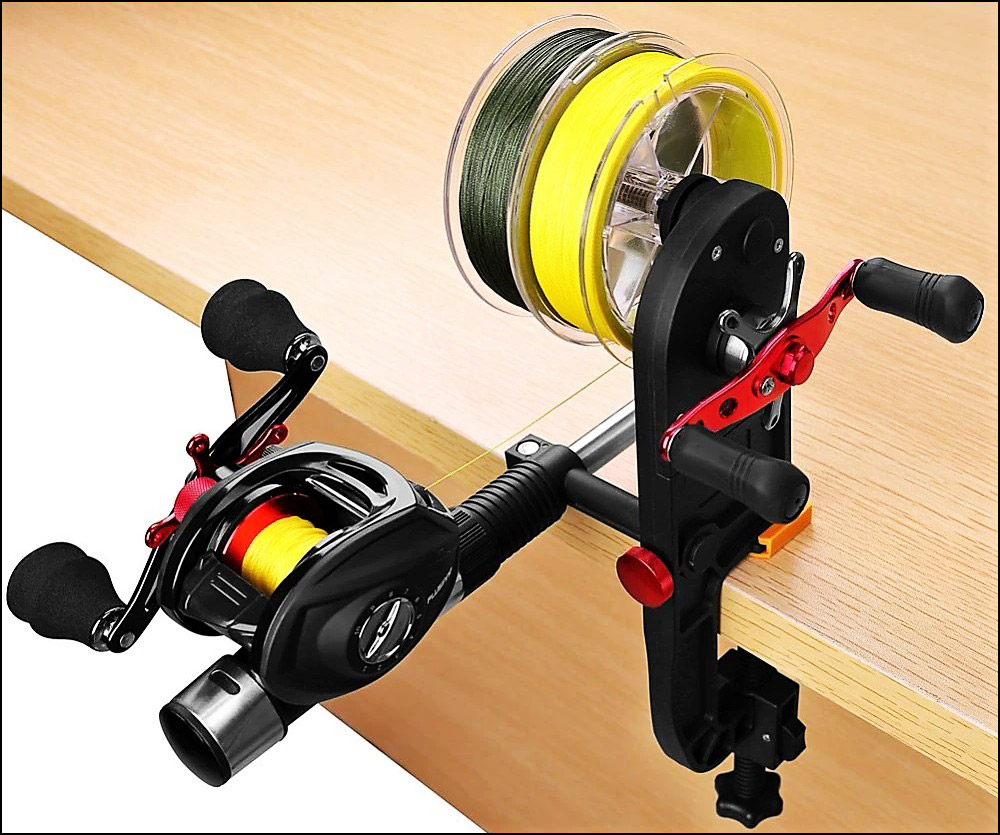
Every angler has a tale that tugs at their heartstrings. Mine begins at dawn on a tranquil lake, the air alive with anticipation. The lures were ready, and the bait was fresh. I held in my hands the instrument that, unbeknownst to me, would change my perspective on fishing forever—a newly spooled fishing reel. 🌅
My cast was flawless. The line shot through the early morning mist, and the lure hit the water, creating a small splash that broke the stillness of the lake. The way the line uncoiled from the reel was poetry in motion, a testament to the balance between man and machine. It was that day I realized the significance of a well-spooled fishing reel.
If you’ve been fishing for a while, you’ll know that casting your line is a game of precision and skill. The mastery of your reel plays a crucial part in this. Spooling your fishing reel correctly might seem like a small detail, but it’s a detail that has the power to transform your angling experience. 🎯
Yet, surprisingly, many fishing enthusiasts overlook this key aspect of the sport. This could be due to the apparent complexity of the task, or simply underestimating its importance. 🤷♂️
What if I told you that understanding and mastering this skill isn’t just for the fishing elite but is a practical and crucial knowledge every angler should possess?
In this article, we’re going to demystify the art of spooling a fishing reel, guiding you through its intricacies, helping you avoid common pitfalls, and sharing some pro tips to elevate your fishing experience.
So grab your fishing gear, it’s time to reel in some knowledge! 🎓🎣
📘 Reel in the Basics: Understanding the Different Types of Fishing Reels
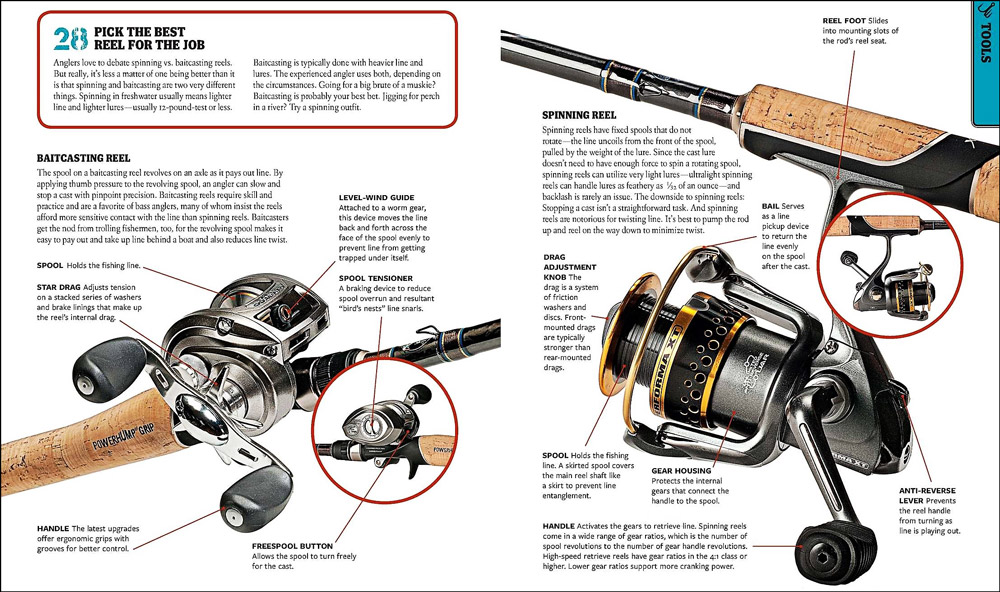
Understanding the basics of a fishing reel is fundamental to grasping the art of spooling. There are a variety of fishing reels, each with its unique features and applications. Let’s reel off the basics and delve into two of the most popular types. 🎣
Spinning Reels 🌀
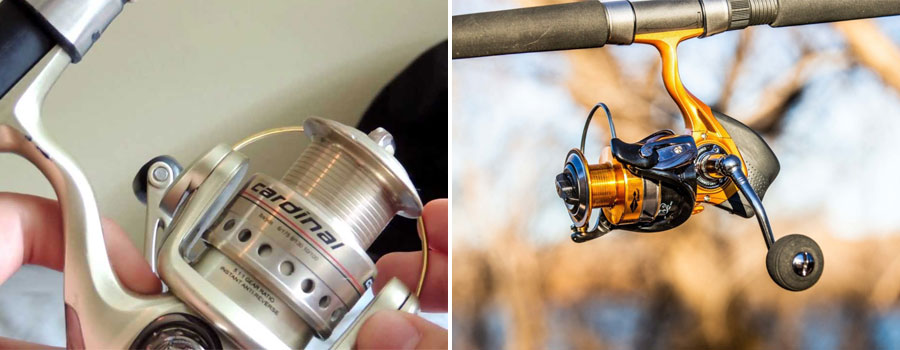
Spinning reels are a favorite among anglers, especially beginners, due to their ease of use and versatility. They hang beneath the rod, making them an excellent choice for lightweight lures and bait. Their open-faced design lets the line flow freely off the spool, perfect for casting at great distances.
Baitcasting Reels 🏹
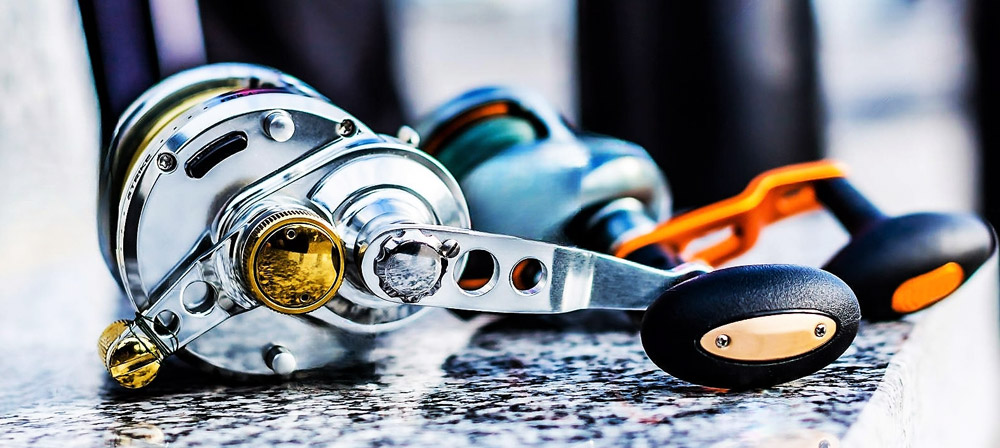
Baitcasting reels sit atop the rod and are favored by experienced anglers. Their superior control and accuracy make them the go-to for heavy lures and line. These reels come with a higher learning curve, but mastering them can significantly enhance your fishing prowess.
Now that we have a basic understanding of the two major types of fishing reels, let’s cast our attention to the crucial process that underpins their functionality—spooling.
🎣 The Science of Spooling: Why It’s Essential for Every Angler
Spooling is the process of winding the line onto the reel. Sounds simple, right? But here’s the catch—each type of reel requires a specific spooling technique for optimum performance.
For a spinning reel, improper spooling can lead to line twists and dreaded “bird’s nests“— a tangled mess that can be a nightmare to unravel. Properly spooled, however, your reel will allow for smooth, far-reaching casts, and a hassle-free retrieval. 🎣
Baitcasting reels, on the other hand, demand precise spooling to prevent backlash—the backlash being a tangling of the line that happens when the spool spins faster than the line can be fed off. A well-spooled baitcasting reel will offer unmatched control and precision, ensuring every cast is a potential big catch. 🏆
Mastering the art of spooling isn’t just an option, but a necessity for every angler. Whether you’re a weekend hobbyist or a seasoned professional, understanding the science of spooling can elevate your fishing game, and keep those tangled-line troubles at bay! 🚀
🎦Video YouTube official channel: How to spool a spinning reel: HOW TO FISH
🧰 Your Spooling Arsenal: Essential Tools and Materials
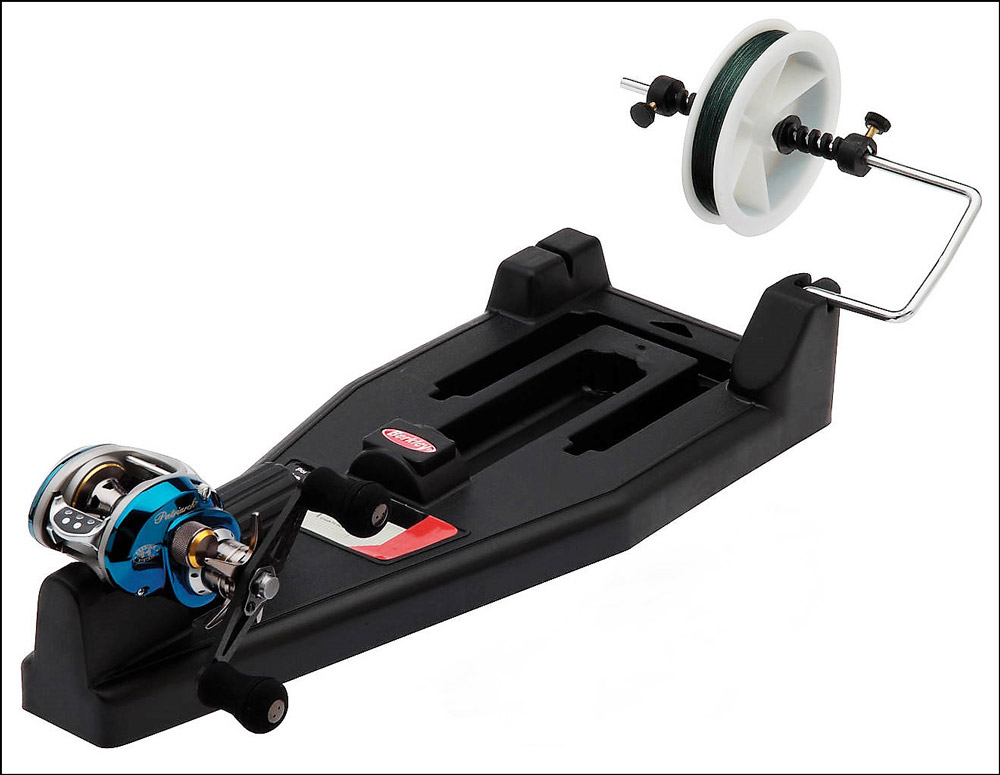
Before we set sail on our spooling journey, let’s make sure we have all the necessary gear on board. To spool your fishing reel, you’ll need:
- Fishing Line: 🧵 Your fishing line is the backbone of your spooling operation. Monofilament, braided, and fluorocarbon are the three most common types of lines. Each comes with its strengths and ideal uses, so it’s essential to pick the right one for your needs.
- Fishing Reel: 🎣 Whether it’s a spinning reel or a baitcasting reel, make sure it’s clean and in good condition before you start the spooling process.
- Rod (optional): 🚣 While not strictly necessary for the spooling process, having the rod handy can provide stability and help maintain tension.
- Line Stripper (optional): 🛠️ A line stripper can be useful for removing old line from your reel quickly and safely.
- Line Spooler (optional): 🔄 A line spooler is a device that can make spooling your reel easier and more efficient, especially if you’re doing it alone.
- Scissors or Nail Clippers: ✂️ You’ll need a sharp cutting tool to cut the fishing line once you’ve spooled the reel.
Pro’s Picks: Trustworthy Brands for a Spooling Win
Selecting high-quality, reliable materials for your fishing gear is crucial. In my years of fishing, I’ve found the following brands to offer excellent quality and reliability:
- For Fishing Line: Power Pro, Sufix, and Berkley Trilene are brands that consistently deliver in terms of durability and performance.
- For Fishing Reels: Shimano, Penn, and Abu Garcia reels have stood the test of time and proved to be reliable companions on countless fishing trips.
- For Line Spoolers: Piscifun and PLUSINNO make reliable line spooling equipment that simplifies the process significantly.
Remember, quality gear can make all the difference when you’re out on the water. Investing in reputable brands might seem costly upfront, but it pays off with an enhanced fishing experience and gear that stands the test of time! 🎣🏆
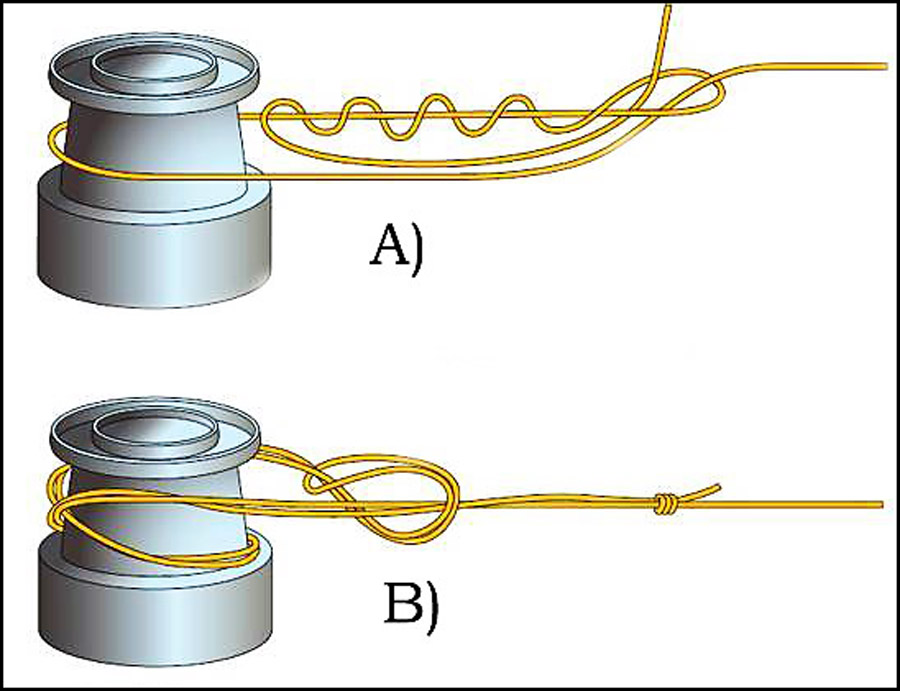
🎯 Mastering the Spool: A Step-by-Step Guide to Spooling Your Reel
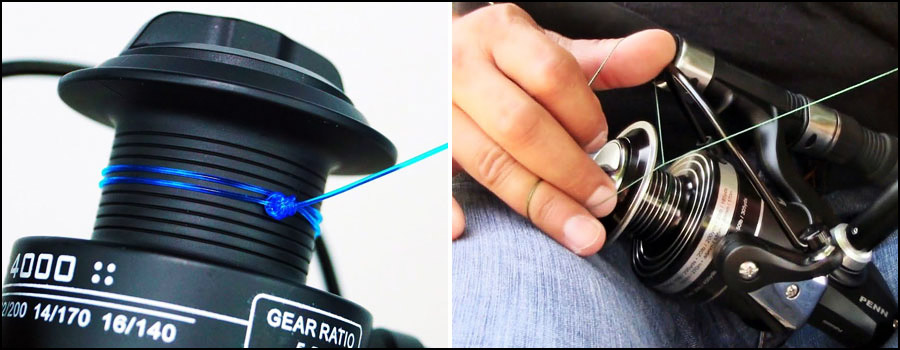
Embarking on the spooling journey might seem overwhelming at first, but fear not, my fellow anglers! I’m here to guide you through the process, step by step, ensuring you acquire the skill to spool both spinning and baitcasting reels with ease.
🔆 Spooling a Spinning Reel 🌀
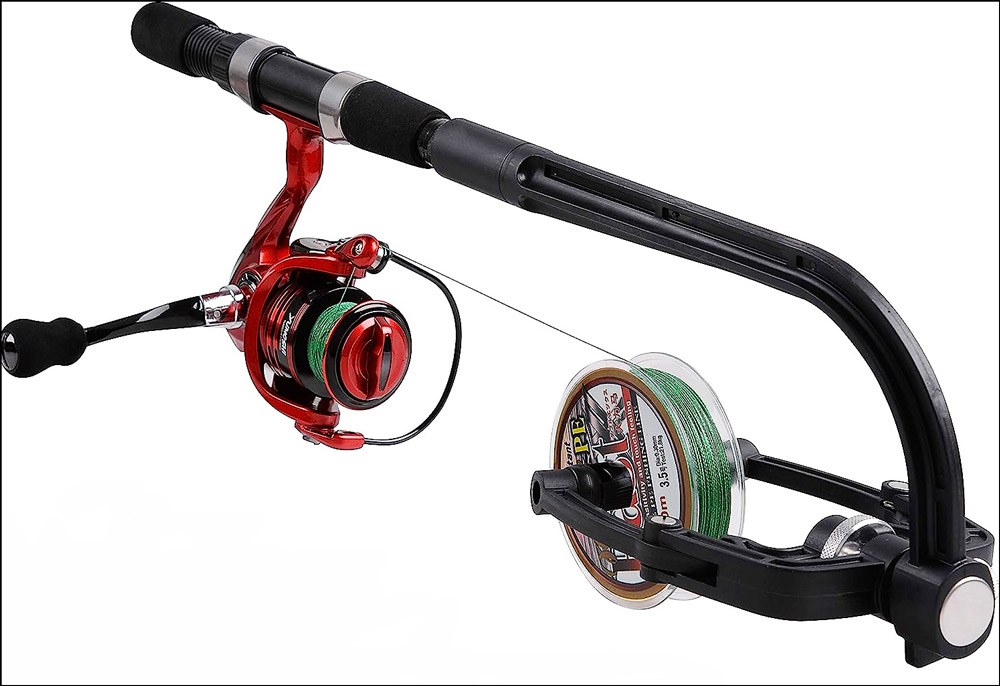
- Open the Bail Arm: Flip open the bail arm of your spinning reel to prepare for the line.
- Thread the Line: Take the end of your fishing line and thread it through the first rod guide, then tie it onto the spool. A simple arbor knot should do the trick.
- Secure the Line: Close the bail arm to secure the line onto the spool.
- Apply Tension: Hold the line between your fingers to create a slight tension. This helps ensure the line winds onto the spool evenly.
- Begin Spooling: Start turning the reel handle to wind the line onto the spool. Keep an eye on the line to ensure it’s being evenly distributed across the entire spool.
- Check the Fill Level: Keep spooling until the line is about one-eighth of an inch from the edge of the spool.
- Cut the Line: Once you have enough line on the spool, use your scissors or nail clippers to cut the line, leaving a bit of a tail for attaching your lure or hook.
💢 Spooling a Baitcasting Reel 🏹
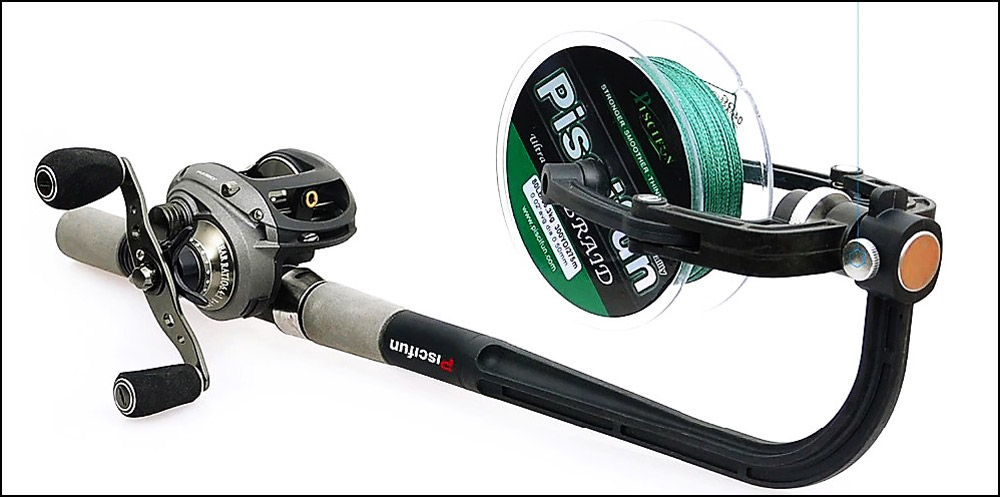
- Thread the Line: Run the end of your fishing line through all the rod guides and thread it through the line guide on your baitcasting reel.
- Tie the Line: Tie the line to the spool using an arbor knot.
- Apply Tension: Hold the line just above the reel with your thumb and forefinger to keep the line tight.
- Start Winding: Start cranking the reel handle to wind the line onto the spool. Keep an eye on the spool to make sure the line is winding on evenly.
- Check the Fill Level: Stop winding when the line is about one-eighth of an inch from the edge of the spool.
- Cut the Line: Once you’re done spooling, cut the line, leaving some extra for rigging your bait or lure.
By following these steps, you’ll have a perfectly spooled reel ready for action! Remember, practice makes perfect. The more you spool, the more efficient you’ll become. Happy spooling! 🎣🚀
🌟 Knots for Spooling a Fishing Reel: Your Complete Guide
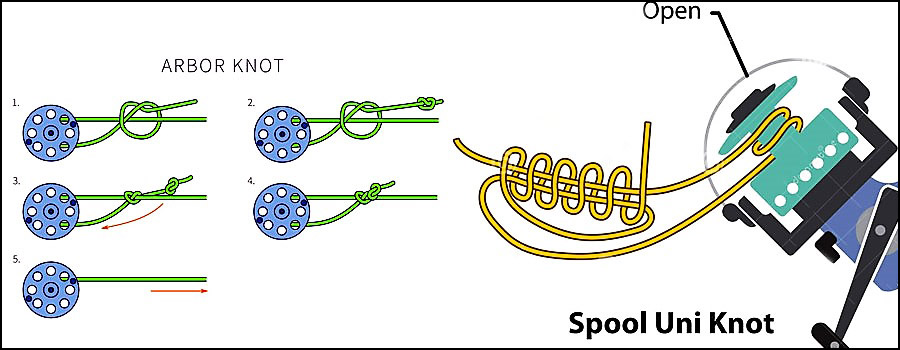
Learning how to tie effective knots is crucial when it comes to spooling your fishing reel. Let’s dive into some of the commonly used knots and step-by-step instructions on how to tie them.
| Knot Type | Description | Step-by-Step Instructions |
|---|---|---|
| Arbor Knot | An arbor knot is often used to attach the fishing line to the reel spool, known as the ‘arbor’. It’s simple and reliable. | 1. Run the end of your line around the spool.
2. Tie an overhand knot around the standing line. 3. Tie a second overhand knot in the tag end. 4. Pull on the standing line to slide the first knot down to the spool and secure it with the second knot. |
| Uni Knot | Also known as the Duncan Knot, the Uni Knot is versatile and strong, making it a favorite for tying line to the reel. | 1. Pass the line around the spool.
2. Run the tag end back parallel to the standing line. 3. Make a loop by laying tag end over the doubled line. 4. Make 6 turns with the tag end around the double line and through the loop. 5. Moisten lines and pull tag end to tighten up the knot. 6. Slide knot down to the spool and trim the tag end. |
| Improved Clinch Knot | This knot is a popular choice for tying a fishing line to hooks, lures, or swivels. It’s not typically used for tying line to a reel but is useful to know for completing your fishing setup. | 1. Thread the line through the eye of the hook or lure leaving about 6-12 inches of tag end.
2. Twist the tag end around the standing line 5-7 times. 3. Thread the tag end through the loop closest to the eye of the hook/lure. 4. Moisten and then pull both the tag and standing lines to tighten the knot. 5. Trim excess tag end. |
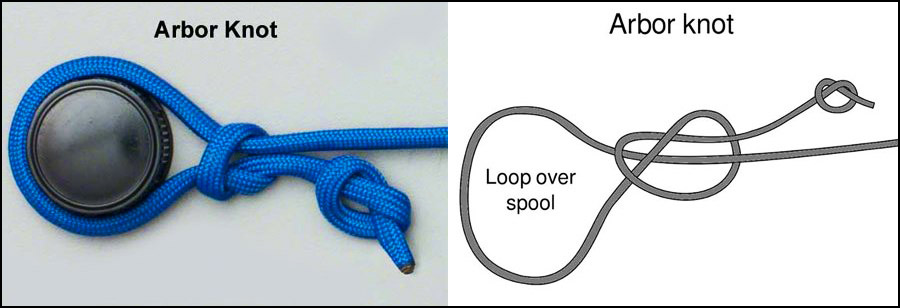
Remember, practice makes perfect. By repeatedly tying these knots, you’ll be able to secure your line to your reel and hooks efficiently and reliably every time you hit the water. 🎣
⚠️ Tackling Tangles: Common Spooling Mistakes and How to Avoid Them
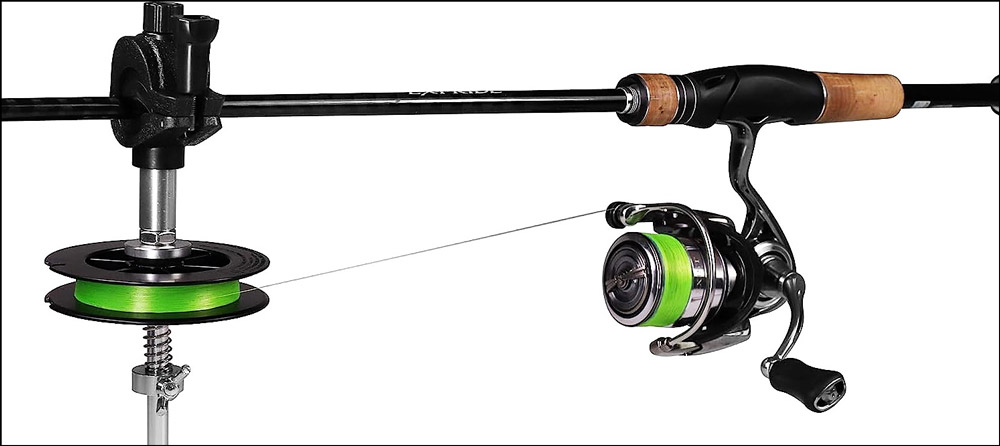
Every angler, novice or pro, has faced the trials and tribulations of a poorly spooled reel. Tangles, knots, and line twists can turn a relaxing fishing trip into a frustrating ordeal. Let’s reel in some knowledge about common spooling mistakes and how to avoid them.
Mistake 1: Overfilling the Spool 🎣
Overfilling your spool might seem like a good idea, more line equals more depth, right? Wrong! An overfilled spool often leads to line slipping off, causing tangles and reducing casting accuracy.
Pro Tip: Leave about an eighth of an inch of room from the line to the edge of the spool. This allows for optimal line distribution during casting and retrieval.
Mistake 2: Incorrect Line for Your Reel 🔄
Using a line that doesn’t match your reel can lead to numerous issues. A line that’s too thick can overfill the spool quickly, while a line too thin might not provide the strength or tension you need.
Pro Tip: Check your reel’s line capacity listed on the reel itself or in the user manual. This will guide you on the ideal line type and strength for your reel.
Mistake 3: Not Applying Enough Tension During Spooling 🏹
Not maintaining a steady tension during spooling can result in loose line on the reel, leading to line twists and uneven distribution.
Pro Tip: Maintain a firm (but not tight) grip on the line as you spool, creating a slight resistance. This helps ensure an evenly wound spool.
Mistake 4: Ignoring Line Twist 🌀
Ignoring line twists when spooling, especially on spinning reels, can lead to the dreaded ‘bird’s nest’ of tangled line.
Pro Tip: When spooling, make sure the line comes off the spool in the same direction it goes onto the reel. If you notice twisting, stop and straighten out your line before continuing.
Remember, successful spooling is all about patience and attention to detail. By avoiding these common mistakes, you’ll be on your way to a more efficient and enjoyable fishing experience! 🎣🏆
🎩 Pro’s Secrets: Unveiling Unique Spooling Tips and Tricks
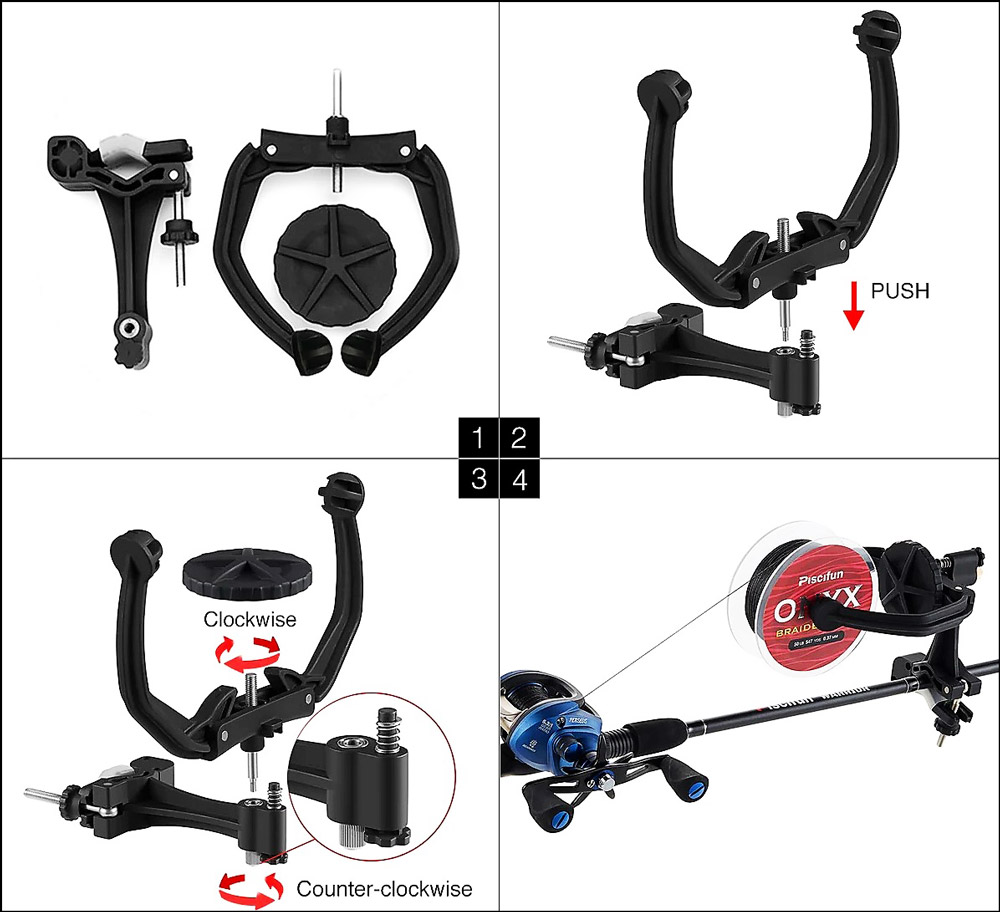
Over the years, I’ve honed my fishing skills, sometimes learning the hard way, through trial and error. Along the way, I’ve discovered a few unique tricks to spooling that can drastically improve your efficiency and success rate. Let’s cast out and reel in some of these insider tips!
Tip 1: The Pen Trick 🖊️
This simple yet effective trick works wonders for maintaining line tension during the spooling process. Simply thread your line spool onto a pen or pencil and ask a friend to hold the ends as you wind. This keeps the line spool stable and provides just the right amount of tension.
Tip 2: The Hot Water Technique 🔥💧
Monofilament line tends to have memory, meaning it keeps the shape from the original spool, which can cause twists when transferred to your reel. A trick to eliminate this is to soak your monofilament line in hot (not boiling) water for a few minutes before spooling. This relaxes the line, reducing memory and making it more pliable.
Tip 3: The Line Conditioner Secret 🧴
Consider using a line conditioner. This product reduces line memory, twist, and backlash on baitcasting reels, and it can even help your line last longer. Spray it on the night before your fishing trip for the best results.
Tip 4: The Double Check ✔️✔️
After spooling, especially with new line types or brands, test your setup. Make a few practice casts and retrieves to make sure there’s no line twist or other issues. This quick double-check can save you a lot of trouble once you’re out on the water.
These tips and tricks are not just about making the spooling process easier; they’re about enhancing your entire fishing experience. With fewer line troubles, you’ll have more time to enjoy the thrill of the catch! Remember, the devil is in the details, and these small tweaks can make a big difference. 🎣👍
🎯 The Game-Changer: How Proper Spooling Elevates Your Fishing Game
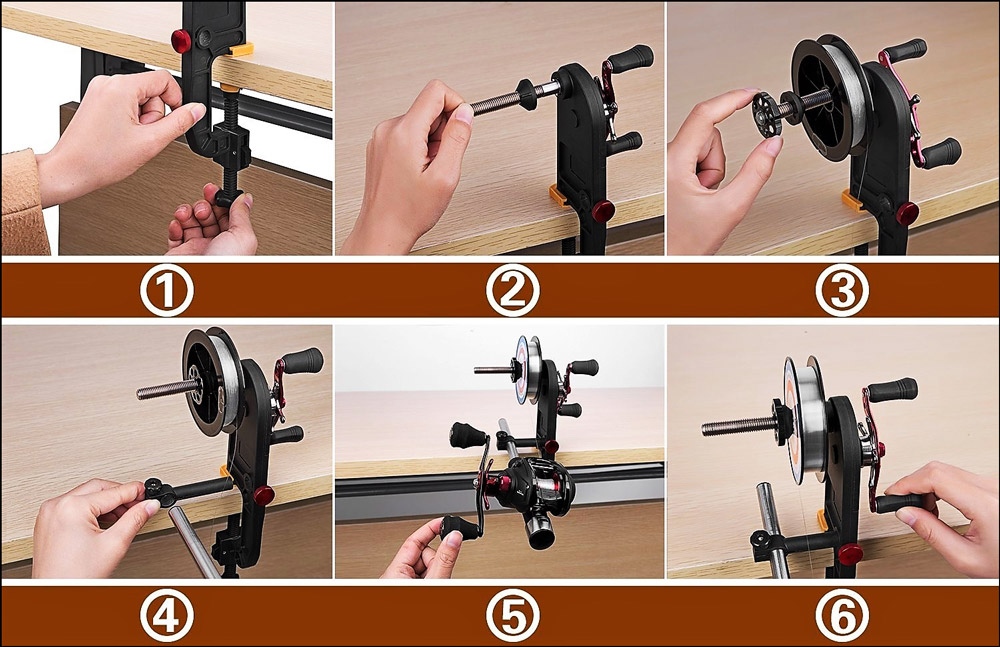
Fishing isn’t just a hobby or sport; it’s a science and an art form, where even the smallest details can greatly impact your experience. One such detail is the spooling of your fishing reel.
Proper spooling can make a world of difference, enabling smoother and longer casts, efficient retrieves, and less time untangling lines, meaning more time actually fishing! 🎣 But don’t just take my word for it, let me share a personal experience that speaks volumes about the importance of proper spooling.
The Tale of the Silver King 🐟
It was a crisp morning, and the sun was just starting to peek above the horizon as I set out in my boat. The target for the day was Tarpon, the Silver King, known for their acrobatic fights and challenging catches. I had been on this mission for a while, with little success. That day, however, I had come prepared. I had painstakingly spooled my reel the night before, ensuring everything was perfect.
The time came, and I cast my line. The cast was long, smooth, and landed exactly where I aimed – a testament to my well-spooled reel. Not long after, I felt a mighty pull – a Tarpon had taken the bait. The fight was on!
With a less than perfectly spooled reel, the Tarpon’s leaps and runs would have resulted in line twists, tangles, even breakages. But that day, my line unfurled smoothly with each of the Tarpon’s acrobatics, and the retrieval was equally smooth, allowing me to keep the tension needed to prevent the hook from loosening.
After an adrenaline-filled fight, I reeled in a spectacular Tarpon. It was not just the victory of landing the elusive Silver King, but also a testament to the significant role proper spooling played in that success. 🏆
So, fellow anglers, don’t underestimate the power of a well-spooled reel. It’s not just about avoiding line twists and tangles; it’s about enhancing your casting and retrieving, maximizing your chances of landing that dream catch, and ultimately, elevating your entire fishing experience. 🌊🎣🚀
🎦Video YouTube official channel: How to Spool a Spinning Reel
🛠️ Reel Talk: Maintenance and Care for Your Spooled Reel
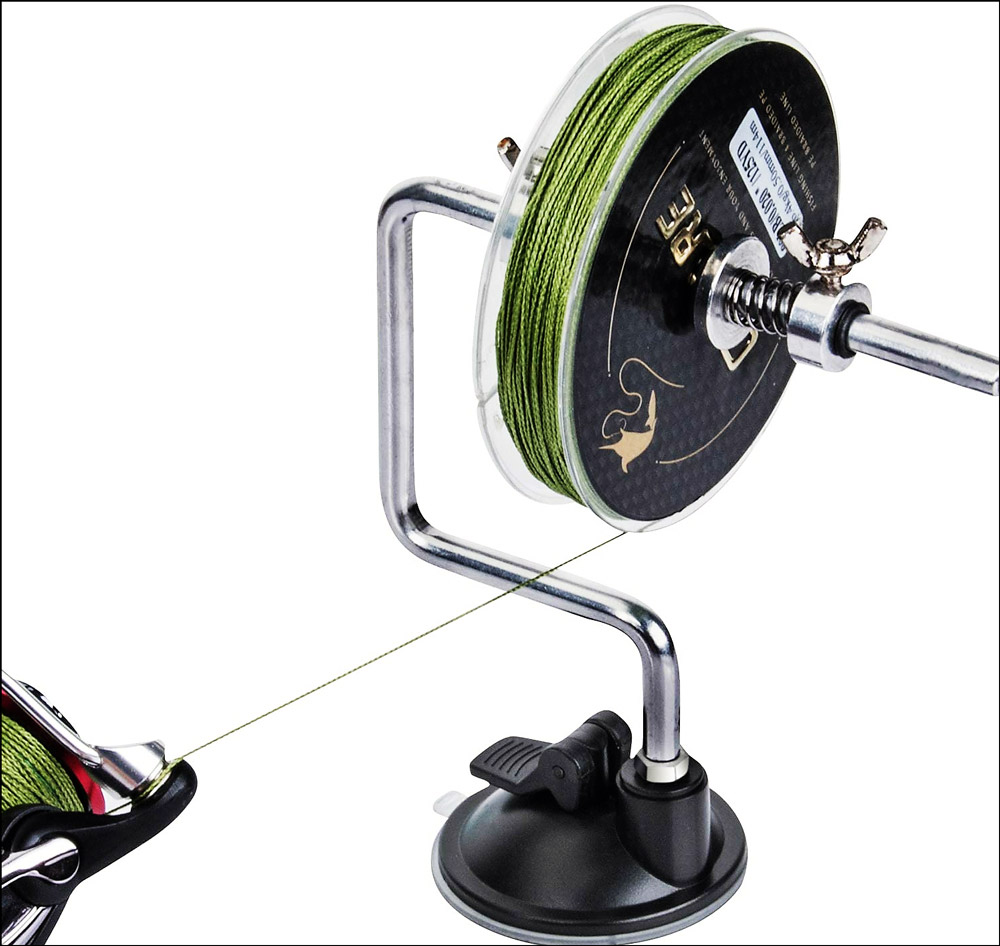
Just like any piece of valuable equipment, your fishing reel needs regular care and maintenance to ensure its longevity. A well-kept reel not only enhances your fishing experience but also saves you the expense and trouble of frequent replacements. Here are some pro tips to keep your spooled reel in tip-top shape:
Tip 1: Regular Cleaning 🧼
Dirt, sand, and salt are your reel’s worst enemies. After each fishing trip, especially in saltwater, rinse your reel with fresh water. Avoid high-pressure water, as it can force sand and salt into the reel’s components. Once rinsed, wipe it down with a dry cloth.
Tip 2: Lubrication is Key 🛢️
Proper lubrication keeps your reel operating smoothly and reduces wear and tear. Use reel oil and grease as per the manufacturer’s recommendations. Typically, oil is for high-speed parts, while grease is for slower-moving parts and gears.
Tip 3: Storage Matters 🏠
When not in use, store your reel in a dry, cool place away from direct sunlight. Excessive heat and humidity can damage the reel and line. If you’re storing it for an extended period, loosen the drag to relieve pressure on the springs.
Tip 4: Regular Line Replacement 🔄
Over time, line can become brittle, coiled, and less efficient. A fresh line will cast better and is less likely to break under tension. Depending on how frequently you fish, consider changing your line every season or after a few trips.
Tip 5: Professional Check-ups 🔍
Consider getting your reel professionally serviced at least once a year, especially if you fish frequently. Professionals can spot and fix issues that may not be immediately apparent to the untrained eye.
Remember, a fishing reel is an investment. Taking the time to maintain and care for it properly will pay dividends in the long run with better performance, fewer problems, and an enhanced fishing experience. Remember, take care of your reel, and it will take care of you on the water! 🎣👍🏼💯
How to String Fishing Spinning Reel
🎦Video YouTube: How to Spool your Spinning Reel
🎯 Nailing the Spooling Process: No More Tangles and Twists!
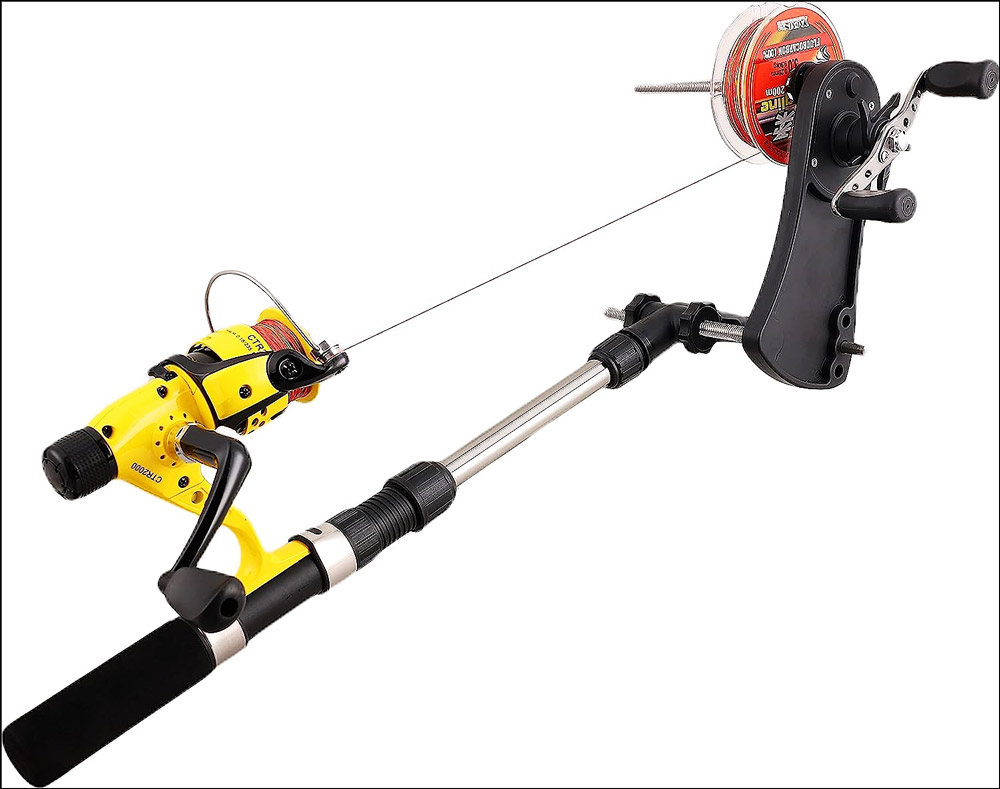
One of the most common challenges that anglers face is dealing with tangles and twists when adding a new line to a spinning reel. However, with the right method, this frustrating problem can be completely avoided. In fact, it’s possible to get it spot-on the first time around! 🎣
The key principle to understand here is that the bail of each spinning reel rotates in a specific direction – either clockwise or counterclockwise. This depends largely on the brand of the reel. Interestingly, the same holds true for the spool of fishing line. The trick lies in aligning these two rotations. Let me break this down for you:
Start by placing your spool of fishing line on a flat surface with the label facing up. Next, position your spinning reel directly above this spool. 🔄
Now, slowly rotate the bail on your reel. You’ll notice it spins in a specific direction. In this case, let’s assume it’s counterclockwise.
Knowing the bail spins counterclockwise, you’ll want your fishing line to unspool in the same counterclockwise direction. Pick up the end of the line and check if it indeed unravels this way when the label is facing upwards.
If it does, then you’ve hit the jackpot! Your line is unspooling in perfect sync with your reel’s bail rotation. This synchronization is exactly what we’re aiming for to prevent twists and tangles.
If the rotations are not in sync, simply flip the new spool over. This will ensure the line unspools in the same direction as your bail’s rotation. Problem solved! 👏
There you have it – a straightforward solution to eliminate those pesky line twists and tangle problems. All it takes is matching the rotation direction of your bail with the unspooling direction of your line. Easy peasy and incredibly effective. Happy spooling! 🐠🎣👍
❓ FAQ: The Simple Art of Spooling a Fishing Reel
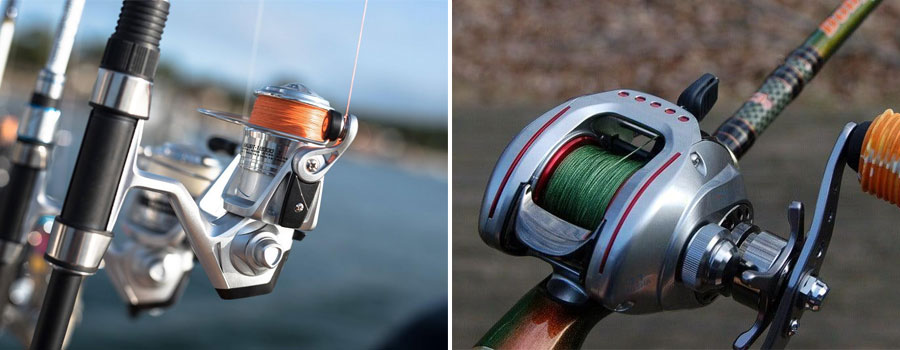
🏁 The Final Cast: Why Mastering Spooling is a Game-Changer
This article was supposed to help you understand the types of fishing lines and which one is better, how to reel it in and how to avoid twists. I hope this information will help you avoid trouble and your fishing will become even more productive and enjoyable!
Throughout our fishing journey today, we’ve delved into the heart of one of the most overlooked aspects of fishing – spooling a reel. We’ve unraveled the mysteries behind the reel types, learned the essentials of spooling, armed ourselves with pro tips, and understood the significant impact of a well-spooled reel on our fishing experience.
While it’s tempting to hurry the spooling process or ignore it entirely, remember my tale with the Silver King 🐟. It underscored the critical difference a well-spooled reel can make. It can be the difference between a fishing trip filled with line tangles, frustrating casts, and lost catches, or one where each cast flies true, and the thrill of the catch is only a smooth retrieve away.
So, I implore you, don’t consider spooling as just another preparatory step. View it as an essential skill to master, a step towards becoming a well-rounded angler. Whether you’re a seasoned fisher or just starting, there’s always room to refine your technique, experiment with new lines, and perfect that spool. 🎣
Embrace the process, enjoy the journey, and remember, the fishing experience isn’t only about the catch; it’s about every cast, every retrieve, and the joy of being one with nature. Happy spooling, and tighter lines to you all! 🌊👍🎣
In the next section, I invite you to share your experiences, tips, or ask questions about spooling a reel. Let’s learn together and make our next fishing trip the best one yet! ⬇️💬
📣 Join the Conversation and Stay Hooked with Us!
We’ve navigated the waters of spooling a fishing reel together, but there’s a whole ocean of fishing knowledge out there to explore! 🌊🎣
Your experiences and tips are invaluable in this journey. So, let’s keep the conversation going. Have a spooling story to share? A trick that’s worked wonders for you? Or a question that’s been nagging at you? Share it in the comments below. We’re all here to learn and grow as anglers. 💬👇
If you’ve found this guide helpful, why not dive deeper? Subscribe to our newsletter and never miss an update. From fishing techniques to gear reviews, tips to tales, we’ve got you covered. 📧👍
Follow us on our social media channels for more fishing advice, beautiful catch photos, and to join a community of enthusiastic anglers just like you! There’s always something new to learn and share in our community. 📲🐟
Together, we can turn every fishing trip into an adventure and every catch into a cherished memory. So, tighten your lines, and let’s continue this journey to becoming better anglers together! 🚀🎣💯
Don’t forget to share this guide with your fishing buddies – because fishing is always better with friends! 🤝🎣
Stay hooked, and see you on the water! 🌊👋🎣
Tags: #how to spool a spinning reel / #how to put line on a spinning reel / #how much braided line to put on a spinning reel / #how to spool a spinning reel with braid / #how to put fishing line on a spinning reel / #how to spool braided line on a spinning reel / #how to spool a spinning reel without line twist / #how to spool a spinning reel with braided line / #how to put braided line on a spinning reel

I live in Tenerife (Canary Islands) for the last 10+ years and share my daily fishing experiences on my website. Many years of personal experience as a fisherman and the vast experience of my friends allow me to write professionally on any fishing topics (from choosing a flashlight and equipment to deep-sea fishing).
All of my advice is based on practical real-world experience and will be useful to both novice anglers and professionals. Read more about the author.
Affiliate Disclosure: FishReeler.org sometimes gets paid for listings, through sponsors or affiliate programs like Amazon, Ebay, Cabelas, Bass Pro Shop, Shimano, Daiwa, Rapala, Renn, Okuma, KastKing, etс. Clicking a link helps keep FishReeler.org free, at no extra cost to you!
About the author: Each article is verified by the fishing expert Sergio Smirnoff. The articles are written by professional and amateur fishermen with 20+ years of fishing experience.
Note: The views and opinions expressed in this article are those of the authors and do not necessarily reflect the official policy or position of any agency. The articles are for informational purposes only, share your opinions in the comments and join the fishing discussions, let's share our fishing experiences together!

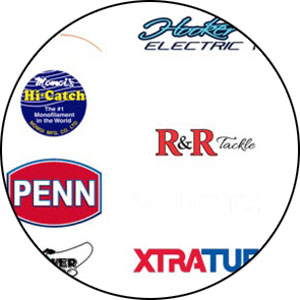
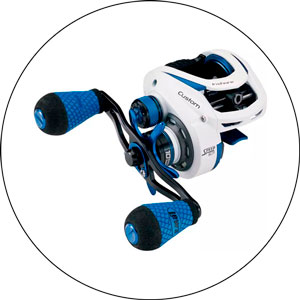
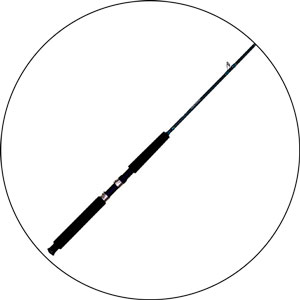



I used to use a yellow fishing line in clear water and the catch was terrible. When I switched to the green color of the fishing line, the catch became better!
I finally figured out how to spool the line so it doesn’t get tangled. This was my problem. Thanks!
I learned a lot from this article. It was really informative and easy to understand. Highly recommended for anyone looking to spool their spinning reel!
This is great advice for anglers of all levels. Spooling your reel correctly makes a huge difference in your fishing success. Thanks for the tips!
It’s enough to write this, and you don’t need a huge article. For myself, I found enough novelty and useful advice. Here’s the process for spooling a spinning reel:
My tips on how to wind the line on the spool:
Additional steps for spooling your spinning reel: